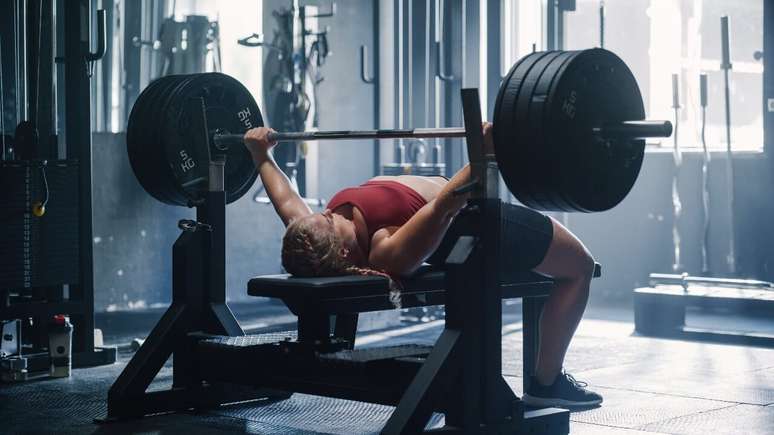Identifying stroke early is essential for successful treatment
Popularly known as stroke, cerebrovascular accident (CVA) can occur at any age and the approaching date of October 29 suggests awareness and greater understanding of the disease. Although not very common, the annual incidence rate of stroke in infants and children ranges from 0.6 to 7.9 per 100,000 children.
This is what happened to inclusion and diversity specialist Natalie Schonwald, who was born with a birth defect known as tetralogy of Fallot and had to undergo heart surgery when she was eight months old. And immediately after the surgery, doctors diagnosed a stroke with hemiplegia on the right side.
In a child stroke recovery center in London, Natalie underwent physiotherapy for two months and, according to her family, it was a very important process for both her and them, who learned to deal with the “new” and to accompany her in her rehabilitation. .
“During my treatment, I underwent physiotherapy, psychotherapy, occupational therapy and definitely had good doctors. Without a good team, I would not have been able to achieve satisfactory goals and be as I am today. Currently, I still have constant monitoring by from a neurologist, cardiologist, neuropsychologist, I do swimming, physiotherapy and a personal trainer to strengthen and recover my movements”, explains Natalie.
Cause of childhood stroke
In most cases, childhood stroke occurs due to the influence of congenital or hereditary factors. During prenatal care there is the possibility of diagnosing cardiac malformations during routine tests. At birth, the heel prick test It is essential for screening for sickle cell disease, a major risk factor for stroke in this population.
However, according to the neurologist of the Israelite Hospital Albert Einstein and company in Vascular Neurology from the Federal University of São Paulo (Unifesp), Dr. Isabella Mesquita Venâncio, the greatest challenge of childhood stroke is its recognition, which is usually late, mainly due to the lack of knowledge of its existence when they are small.
In addition to the often subtle symptoms due to incompletely developed motor and linguistic skills, which can compromise the diagnosis, the stroke can only be recognized when the child already presents some sequelae and developmental delays. “Hence the importance of making this condition known, which can be very serious and have permanent repercussions”, explains Dr. Isabella.

Stroke symptoms in children
World Stroke Day serves as a warning to parents, who must be aware of some signs that their children may present, such as sudden weakness on one side of the body, crooked mouth, difficulty articulating words, visual changes, headache intense and different from usual and may be associated with vomiting and mental confusion. If you experience any of these symptoms, it is advisable to contact your doctor immediately so that an evaluation can be carried out by a specialized professional.
The doctor explains that some conditions mimic the symptoms of a stroke, such as migraines, seizures, Bell’s palsy and meningitis. However, due to the potential severity of the condition, it is essential that your child is evaluated by a neurologist. Additionally, for patients with known risk factors, more specific tests may be needed.
“Those who have heart disease, who should undergo routine cardiac evaluation, and children with sickle cell anemiawho need to undergo transcranial Doppler at least once a year, in addition to regular follow-up with a hematologist and a neurologist”, emphasizes Dr. Isabella.
The earlier the neurological deficit is identified and the stroke diagnosed through imaging tests, such as tomography or magnetic resonance imaging, the more quickly therapeutic measures can be instituted that aim to preserve brain tissue and reduce motor, cognitive and health complications that may occur be presented.
Rehabilitation after stroke
Muscle strengthening, dexterity and coordination trainingthe improvement of speech and swallowing, cognitive development, as well as psychological support to deal with the hospital stay and rehabilitation period are activities that aim to improve the child’s functionality.
“The rehabilitation period is a long and delicate moment, in which we find the child in a state of greater vulnerability. The support of the family is fundamental, which must be present in the rehabilitation activities, providing support and learning techniques and exercises that can be carried out even at home, optimizing and increasing the chances of a complete recovery”, explains Dr. Isabella.
By Elenice Costola
Source: Terra
Ben Stock is a lifestyle journalist and author at Gossipify. He writes about topics such as health, wellness, travel, food and home decor. He provides practical advice and inspiration to improve well-being, keeps readers up to date with latest lifestyle news and trends, known for his engaging writing style, in-depth analysis and unique perspectives.






![The freshness of ‘Fruto Proibido’ (Rita Lee & Tutti Frutti), 50 years later [RESENHA] The freshness of ‘Fruto Proibido’ (Rita Lee & Tutti Frutti), 50 years later [RESENHA]](https://rollingstone.com.br/wp-content/uploads/2025/06/rita-lee-fruto-proibido-1975-capa-foto-divulgacao.jpg)


